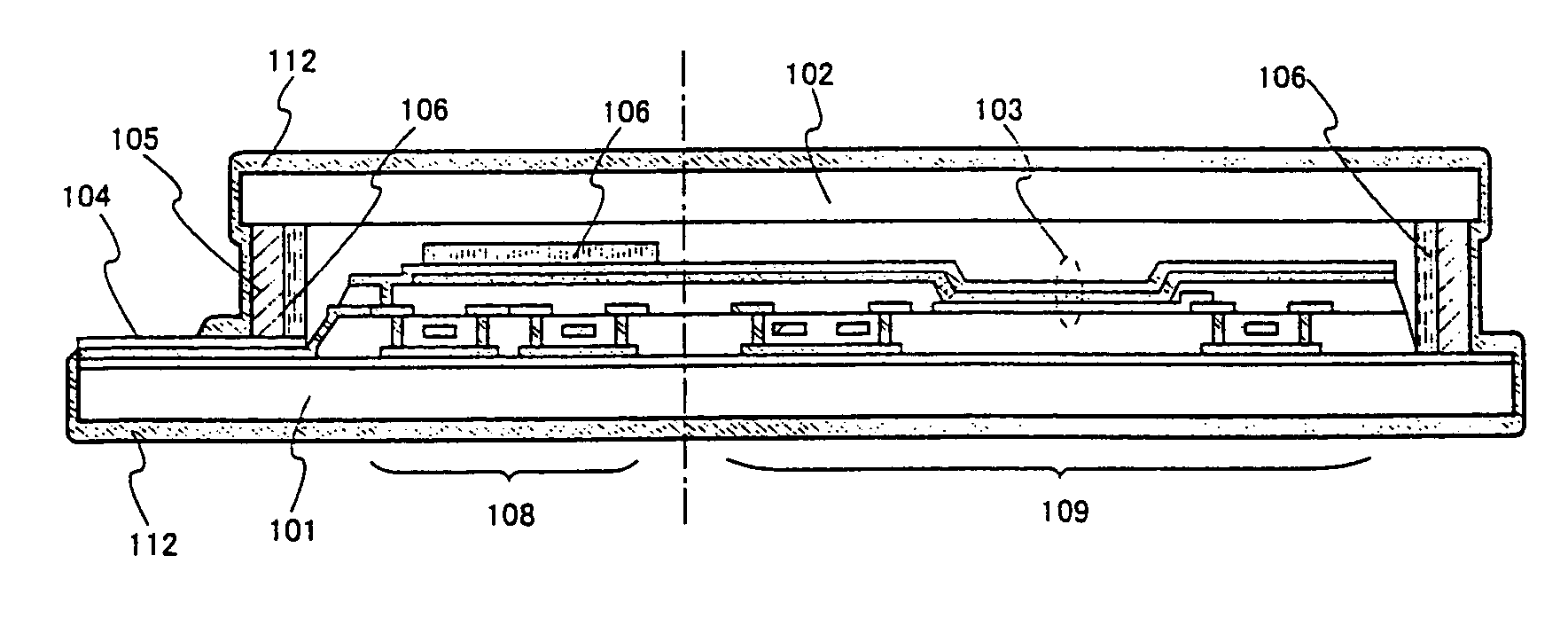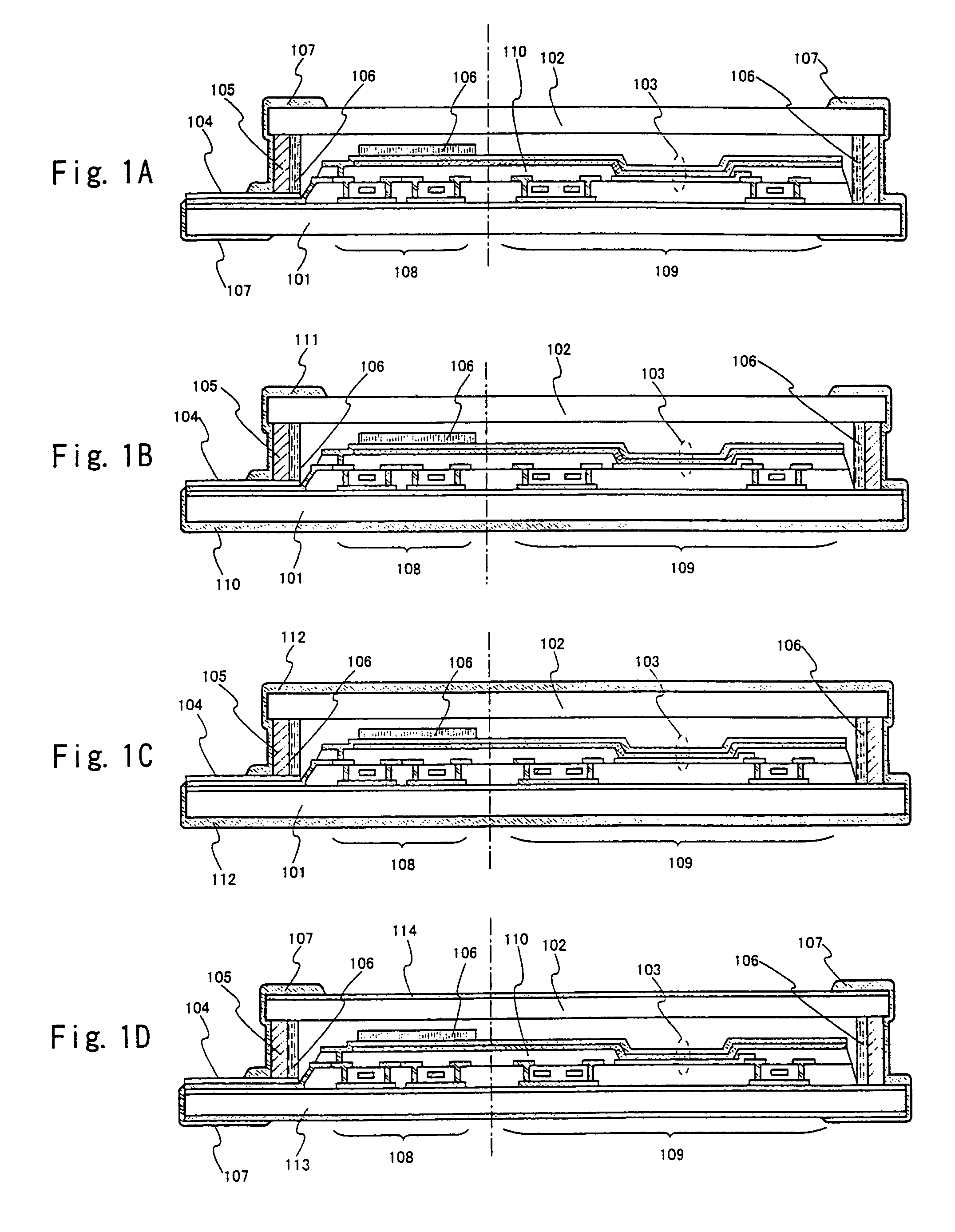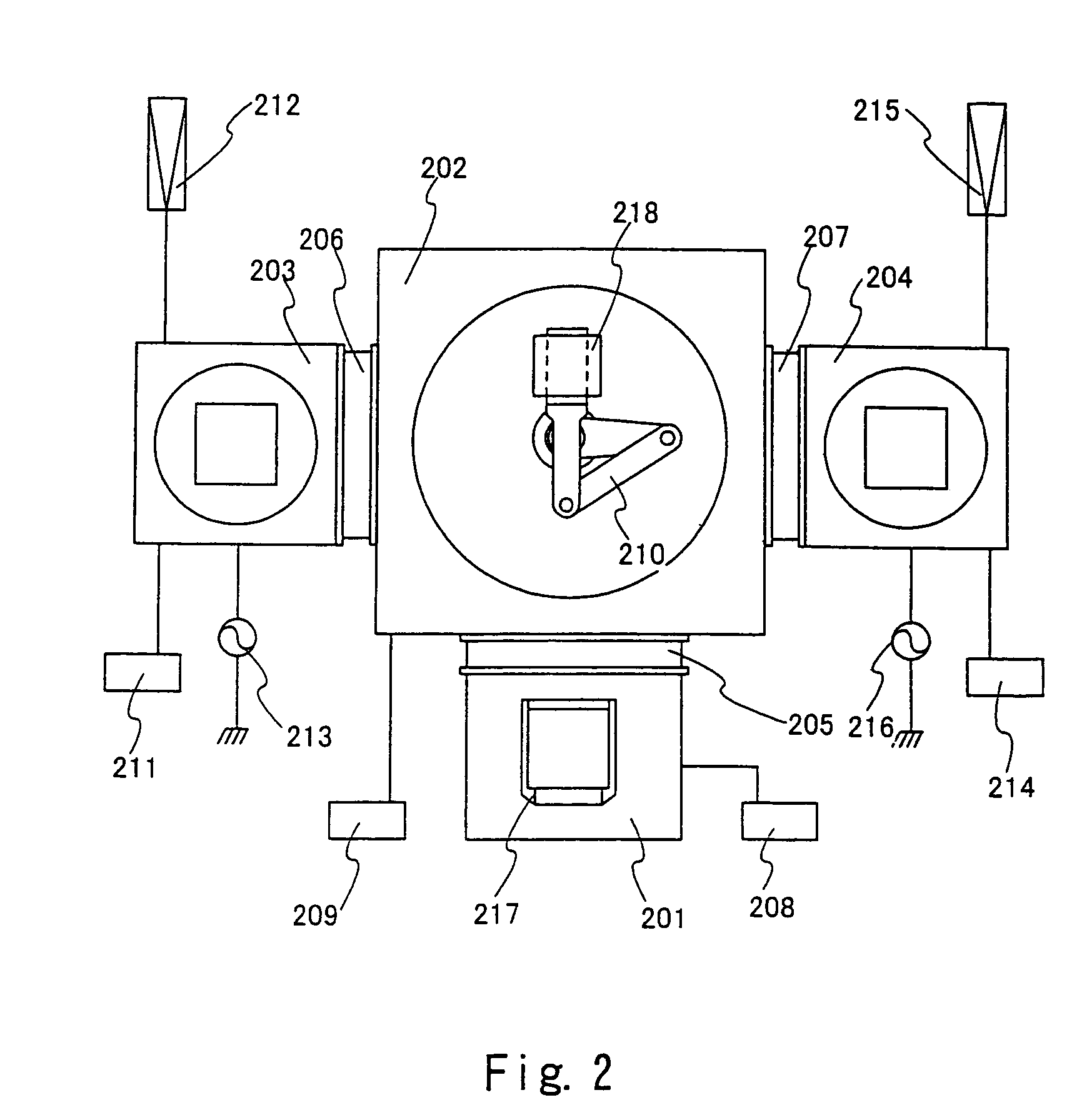Light-emitting device with coating film on portions of substrates and sealing member
a technology of coating film and substrate, applied in the direction of non-linear optics, identification means, instruments, etc., can solve the problems of minute dlc film and hardness, and achieve the effects of high efficiency, easy to scratch or the like, and altering the quality and color of organic resin substrates
- Summary
- Abstract
- Description
- Claims
- Application Information
AI Technical Summary
Benefits of technology
Problems solved by technology
Method used
Image
Examples
embodiment mode 1
[0054]Embodiment Mode 1 is described below with reference to FIGS. 1A to 1D each showing a display device using a light-emitting element. FIG. 1A shows a state where an element substrate 101, on which a driving circuit 108 and a pixel portion 109 are formed using TFTs (thin-film transistors) and a sealing substrate 102 are fixed using a sealing member 105. A light-emitting element 103 is formed in the sealed space formed between the element substrate 101 and the sealing substrate 102. A dryer agent 106 is provided on the driving circuit or in the vicinity of the sealing member 105. It should be noted here that although not shown in this drawing, the dryer agent 106 may be contained in a partition wall 110 that is formed across the pixel portion 109 and the driving circuit 108.
[0055]Each of the element substrate and sealing substrate is made of an organic resin material, such as polyimide, polyethylene terephthalate (PET), polyethylene naphthalate (PEN), polyether sulfone (PES), or a...
embodiment mode 2
[0067]FIGS. 14A and 14B each show an example where a pixel portion and a driving circuit are formed on a substrate having an insulating surface (such as a glass substrate, a ceramic substrate, a crystallized glass substrate, a metal substrate, or a plastic substrate).
[0068]In these drawings, reference numeral 1401 represents a gate-side driving circuit; numeral 1402, a source-side (data-side) driving circuit; and numeral 1403, a pixel portion. Signals transmitted to the gate-side driving circuit 1401 and the source-side driving circuit 1402 are supplied from an FPC (flexible print circuit) 1405 via input wiring 1404.
[0069]A sealing substrate 1406 is used to seal light-emitting elements. The light-emitting elements emit light toward the sealing substrate 1406, so that the sealing substrate 1406 is required to have transparency. Numeral 1407 represents a sealing resin used to seal the sealing substrate 1406 and the element substrate 1400. A cross-sectional view taken along the line A–...
embodiment 1
[0081]The present invention is applicable to various types of display devices so long as the display devices use light-emitting elements. FIG. 4 shows an example of display device to which the present invention is applied. The display device in this drawing is an active matrix type display device produced using TFTs. TFTs are classified into amorphous silicon TFTs and polysilicon TFTs, depending on what materials are used to produce semiconductor films that form channel formation regions. The present invention is applicable to both types of TFTs.
[0082]It is impossible to produce an organic resin substrate, which is resistant to heat processing at 450° C. or higher, using a commercially available material. A laser anneal technique, however, makes it possible to produce polysilicon TFTs only by heating the substrate to 300° C. or below. Also, in many cases, hydrogenation processing is required to be performed during the production of polysilicon TFTs. A plasma-aided hydrogenation proc...
PUM
 Login to View More
Login to View More Abstract
Description
Claims
Application Information
 Login to View More
Login to View More - R&D
- Intellectual Property
- Life Sciences
- Materials
- Tech Scout
- Unparalleled Data Quality
- Higher Quality Content
- 60% Fewer Hallucinations
Browse by: Latest US Patents, China's latest patents, Technical Efficacy Thesaurus, Application Domain, Technology Topic, Popular Technical Reports.
© 2025 PatSnap. All rights reserved.Legal|Privacy policy|Modern Slavery Act Transparency Statement|Sitemap|About US| Contact US: help@patsnap.com



